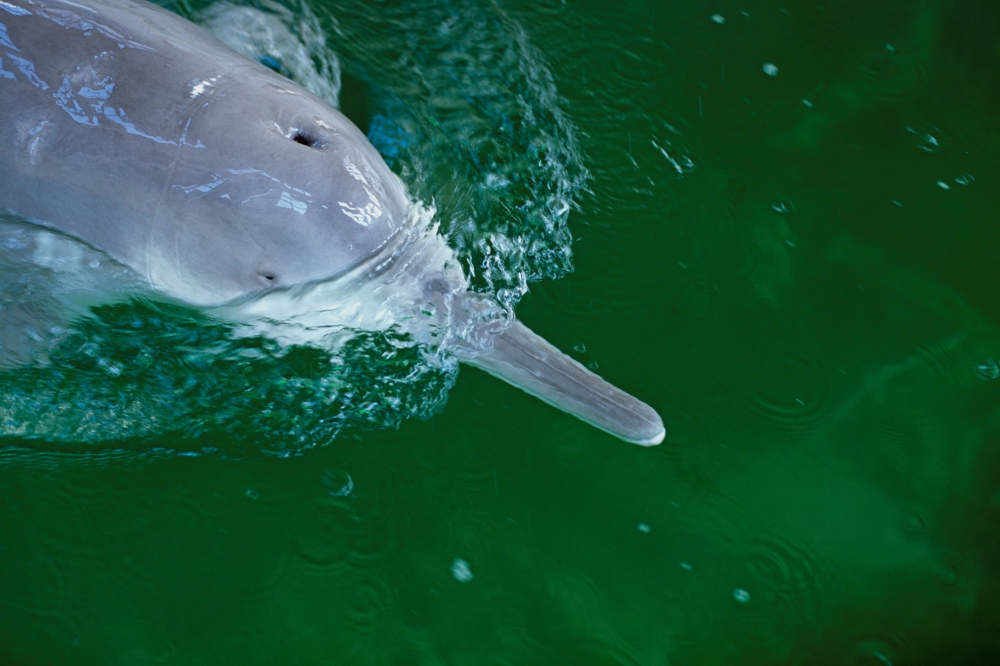The Baiji Dolphin, once considered the goddess of the Yangtze River, now stands as one of the most poignant symbols of human-driven extinction. Baiji, scientifically known as Lipotes vexillifer, was a freshwater dolphin native to the Yangtze River in China. However, the heartbreaking reality is that the Baiji Dolphin is now functionally extinct, with no confirmed sightings since 2002.
Historical Significance of the Baiji Dolphin
The Baiji Dolphin had a deep cultural significance in Chinese mythology and folklore. Often referred to as the “Goddess of the Yangtze,” it was a protector of fishermen and sailors. For centuries, its graceful presence in the river’s waters enchanted locals and visitors alike. However, as China modernized and industrialized, the fate of the Baiji Dolphin took a tragic turn.
Causes of Decline
Multiple factors contributed to the decline of the Baiji, with human activities being the primary cause. The construction of dams, pollution from industrial waste and agricultural runoff, overfishing, and boat traffic all took a toll on the delicate ecosystem of the Yangtze River.
The construction of the Three Gorges Dam, completed in 2006, was particularly devastating for the Baiji Dolphin. The dam altered the flow of the river, disrupted its habitat, and isolated dolphin populations, making it even more challenging for them to survive.
Conservation Efforts for Baiji Dolphin
Efforts to save the Baiji Dolphin began in the late 20th century when scientists and conservationists became increasingly alarmed by its declining population. Conservation initiatives included establishing protected areas, conducting research, and raising public awareness. However, these efforts proved to be too little, too late.
The last confirmed sighting of the Baiji occurred in 2002 during a comprehensive survey of the Yangtze River. Despite subsequent expeditions in search of the elusive creature, no conclusive evidence of its existence has been found since then. In 2006, the Baiji Dolphin was declared functionally extinct, marking a tragic milestone in the history of conservation.

Lessons Learned
The extinction of the Baiji Dolphin serves as a sobering reminder of the irreversible consequences of human actions on the natural world. It underscores the urgent need for sustainable development practices and proactive conservation efforts to protect endangered species and their habitats.
Furthermore, the loss of the Baiji Dolphin highlights the importance of interdisciplinary collaboration in conservation biology. Scientists, policymakers, local communities, and stakeholders must work together to address the complex challenges facing our planet’s biodiversity.
Hope for the Future
While the Baiji may be gone, its legacy lives on as a symbol of environmental stewardship and the consequences of inaction. Its story serves as a rallying cry for renewed efforts to protect and preserve the world’s remaining endangered species.
Moreover, the tragedy of the Baiji has spurred increased conservation efforts for other species in the Yangtze River basin, such as the Chinese sturgeon and the Yangtze finless porpoise. By learning from past mistakes and implementing effective conservation measures, there is still hope for the restoration of the Yangtze River ecosystem and the species that call it home.
Conclusion
The story of this Dolphin is a cautionary tale of ecological neglect and human hubris. Its disappearance from the Yangtze River serves as a poignant reminder of the fragility of life on Earth and the profound impact of human activities on the natural world.
As we reflect on the loss of this majestic creature, let us recommit ourselves to protecting and preserving our planet’s biodiversity for future generations. Only through collective action and a shared sense of responsibility can we ensure a sustainable future for all species, both on land and in the water. The memory of the Baiji Dolphin shall endure as a symbol of our duty to cherish and protect the wonders of the natural world.









